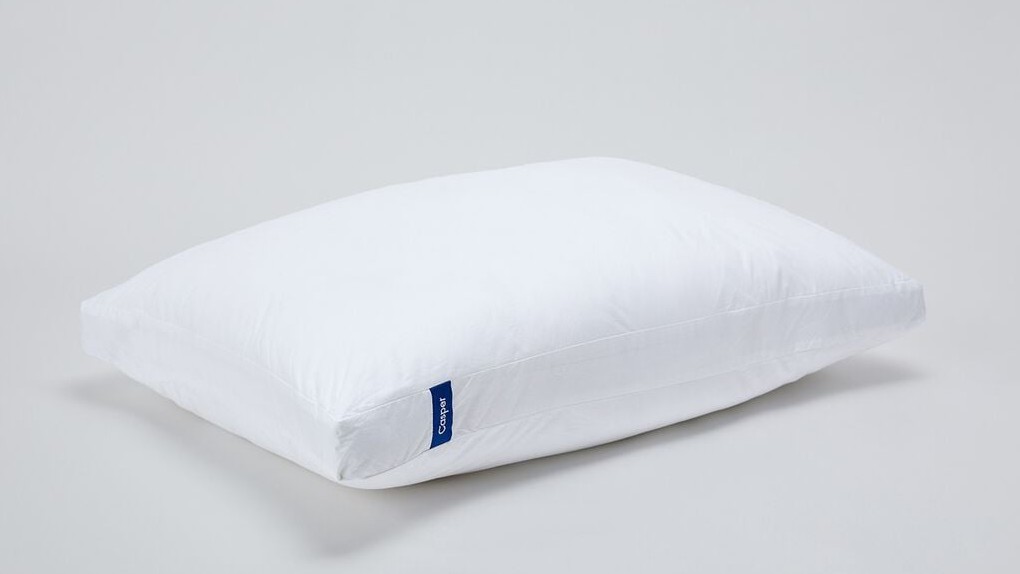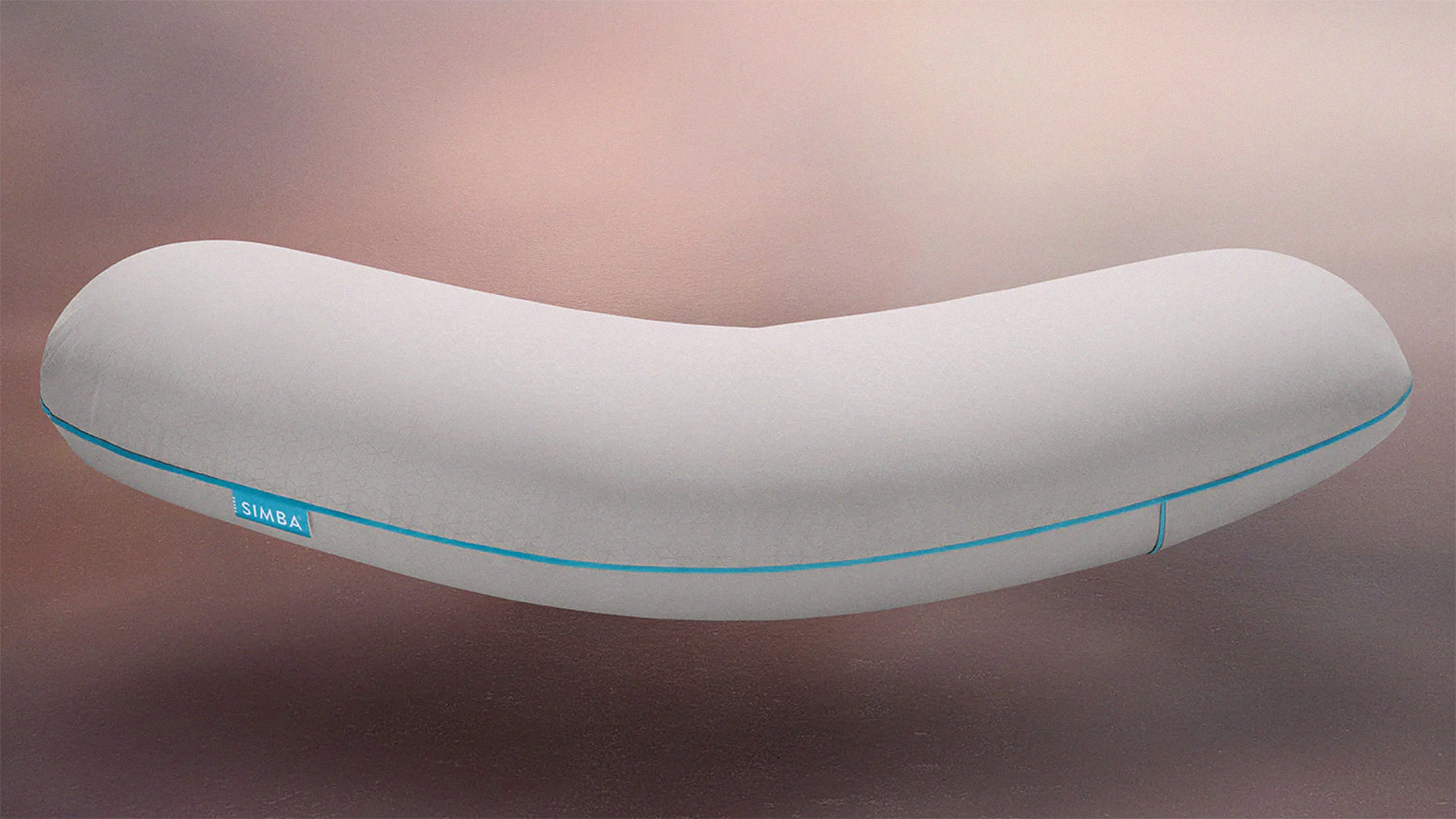
If you're looking for a new pillow, you'll need to know which size to get. That's because the best pillows come in a variety of sizes, and the industry has some common terms to describe them, such as 'standard' and 'king'.
This system isn't quite as simple as it might be, though, for two reasons. The first is that what is a 'standard' or 'king' size pillow varies depending whether you're in the US, UK or EU. Below, we set out these sizes, region by region, so you'll know the difference. The second is that unlike with the sizes you'll see when shopping for the best mattress, not every pillow sold conforms to these standards, so it's always worth checking on the packaging (or the website if you're ordering online) what the actual dimensions of the pillow are.
With all that in mind, read on as we explain what the standard sizes are on both sides of the Atlantic, and how to choose the correct one for you.
What size are pillows in the US?
The most common pillow size in the US is the standard size, which is 20 x 26in (approx. 51 x 66cm). The most popular larger sizes are super standard (20 x 28in / approx. 51 x 71cm), queen (20 x 30in / approx. 51 x 76cm) and king (20 x 36in approx. 51 x 92cm). As a rule of thumb, standard pillows tend to work well for twin/full beds, while super standard pillows complement full beds, and king or queen suit larger beds such as queen, king or Cal King.
| Size | Dimensions |
|---|---|
| Standard | 20 x 26in (51 x 66cm) |
| Super Standard | 20 x 28in (51 x 71cm) |
| Queen | 20 x 30in (51 x 76cm) |
| King | 20 x 36in (51 x 92cm) |
What size are pillows in the UK?
The standard pillow size in the UK is 50 x 75cm (approx. 20 x 30 inches). The most common larger size is king, which is confusingly often called super king. This size is 50 x 90cm (approx. 20 x 35 inches). As a general guideline, standard pillows are well-suited for single or small double beds, while king size pillows complement standard double beds and larger sized beds.
Finally, there is the square, also known as Euro, which is 65 x 65cm (approx. 26 x 26 inches). These are mainly used in the UK for decorative purposes or children's beds.
| Size | Dimensions |
|---|---|
| Standard / Oxford | 50 x 75cm (20 x 30in) |
| King / Super King | 50 x 90cm (20 x 35in) |
| Square / Euro | 65 x 65cm (26 x 26in) |
What size are pillows in the EU?
The standard pillow size across much of the EU is 65 x 65cm (approx. 26 x 26in). These pillows have a square shape, and when sold in the UK and US they are often referred to as square, Euro or Euro sham pillow.
Get daily insight, inspiration and deals in your inbox
Sign up for breaking news, reviews, opinion, top tech deals, and more.
However, the use of this pillow size does vary from country to country and region to region. For example in Germany, square pillows are broadly the norm, especially among older people. However in other nations such as Spain rectangular pillows are the norm, and square pillows are mainly used for decorative purposes. In fact, in Spanish the latter aren't even called pillows! And in France you're likely to find bolster pillows on your bed – they're long and tubular and look more like body pillows than anything else.
In short, despite the ideal of complete standardization of products across the EU, there is no real standard for pillow size as there is in the US and UK.
How to choose the right pillow size
So which pillow size should you choose? Ultimately it's down to personal preference, but if you're not sure, here are a couple of things to take into account. The first thing to consider is your bed size. If you've invested in the best king size mattress, standard pillows may appear too small. So if you want to achieve the aesthetic of a luxurious, boutique hotel, it can be worth opting for a larger pillow. (See our guide to UK vs US mattress sizes for more on this.)
Another factor is what position you tend to sleep in. If you're a side sleeper, you'll probably prefer a higher loft pillow to fill the space between the mattress and your shoulders. If you're a back or stomach sleeper, meanwhile, you'll want a lower loft pillow to keep the spine aligned.

A third consideration is your body size. Taller people typically prefer a longer pillow to provide full neck/head support, while petite people will often prefer a smaller pillow.
Finally, a lot of this just comes down to personal preference. For instance, if you like to hug your pillow, you'll find a larger king size more cozy. And if you suffer from pain, you'll want more height for head and neck support. Also consider the firmness of your pillow: standard firmness levels include soft, medium and hard, and the pillow's fill can make a real difference to how it feels for you.
Unusual pillow size options
Beyond the pillow types we've mentioned so far, there are also many uniquely shaped and sized pillows designed for special needs. For example, body pillows are extra-long, rectangular pillows designed to support the entire body while sleeping.
The standard body pillow size in the US is 20 x 54 in (approx. 51 x 137cm) while in the UK the standard body pillow size is 45 x 150cm (approx. 18 x 59 inches). That said, there are plenty of body pillows that don't conform to these standards: the Simba Cooling Body Pillow, for example, measures a wholly divergent 35 x 120cm.

A special type of body pillow is the pregnancy pillow, which is specially designed to provide support and comfort for expectant mothers. They come in various shapes like C-shaped, U-shaped, or cylindrical bolsters to conform to a pregnant woman's changing body.
At the opposite end of the scale, travel pillows are much smaller to fit snugly behind the neck while sitting on a bus, train or aeroplane. Finally, throw pillows are mainly designed for leaving aesthetic appeal rather than sleep support. When it comes to pregnancy pillows, travel pillows and throw pillows, though, standard sizes don't really exist, because there's so much variation.
Tom May is a freelance writer and editor specialising in tech, design and sleep products. Over the years he's tested a number of mattresses, duvets and pillows, and as a back pain sufferer, has a keen interest in finding ones that offer maximum support. Plus, in running a successful Airbnb business, sleep hygiene and providing the right bedding for guests has become a big part of his day-to-day life. He is author of Great TED Talks: Creativity, published by Pavilion Books.
